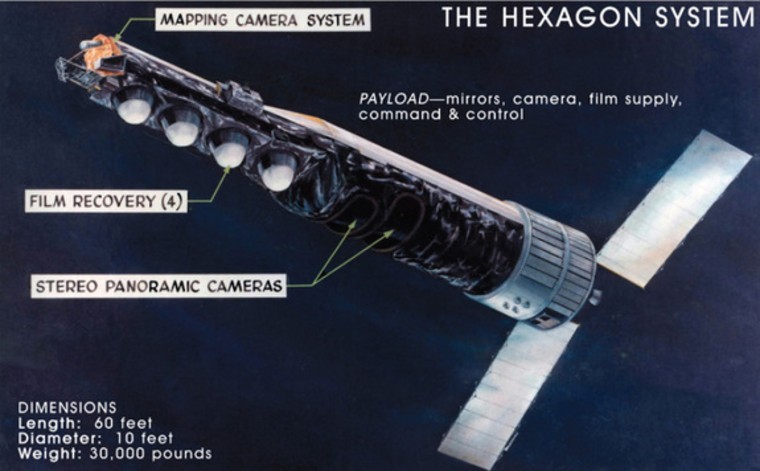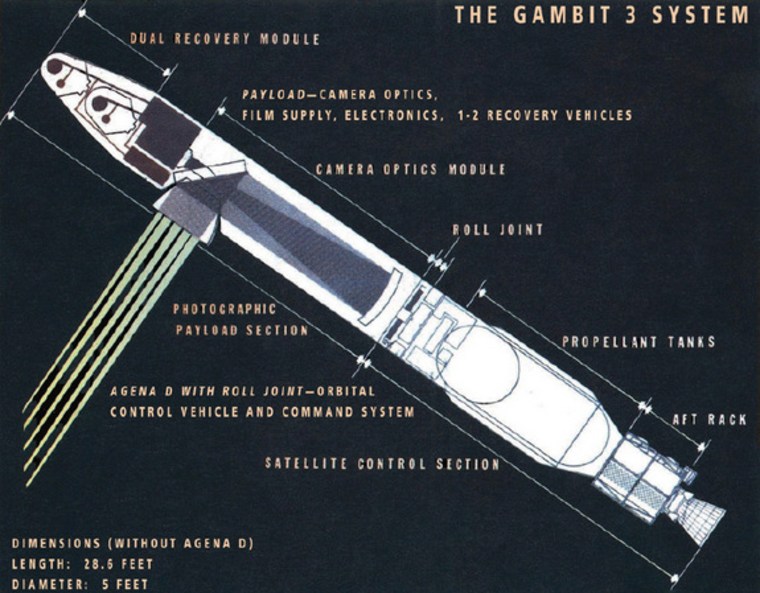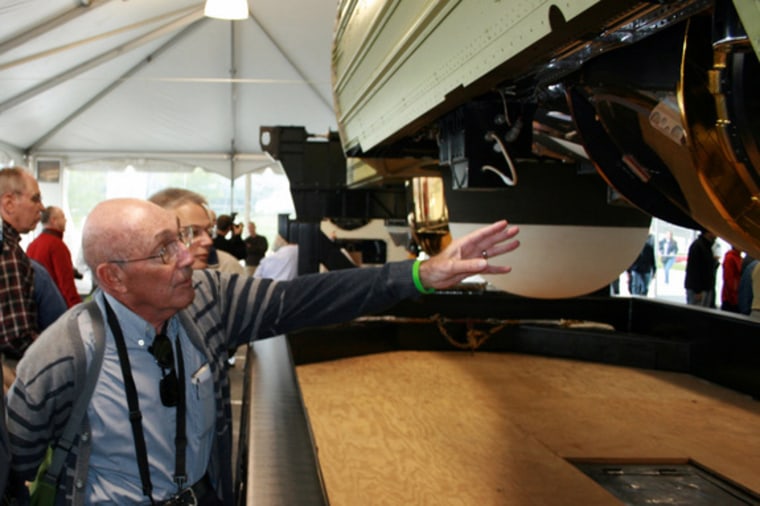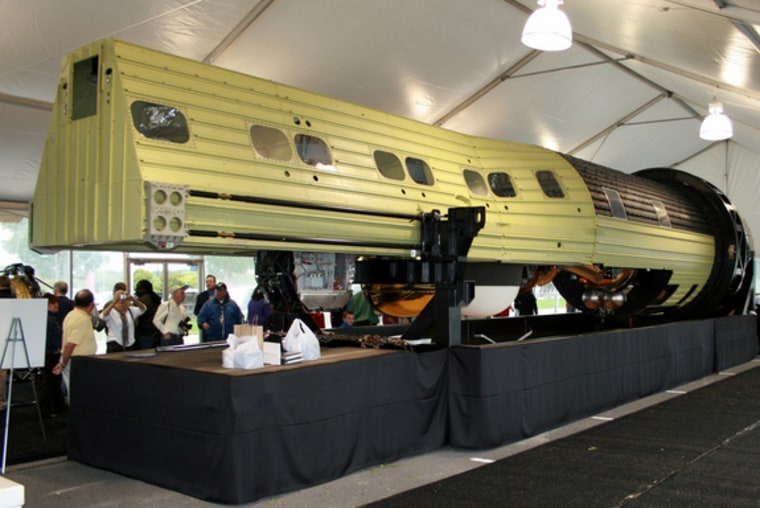Twenty-five years after their top-secret, Cold War-era missions ended, two clandestine American satellite programs were declassified Saturday, with the agency unveiling three of the United States' most closely guarded assets: the KH-7 GAMBIT, the KH-8 GAMBIT 3 and the KH-9 HEXAGON spy satellites.
The vintage National Reconnaissance Office satellites were displayed to the public Saturday in a one-day-only exhibit here at the Smithsonian National Air & Space Museum's Udvar-Hazy Center at Dulles Airport, Va. The three spacecraft are the centerpiece of the NRO's invitation-only 50th Anniversary Gala celebration held at the center later that evening.
Saturday's spysat unveiling was attended by a number of jubilant NRO veterans who developed and refined the classified spacecraft and their components for decades in secret, finally able to show their wives and families what they actually did 'at the office' for so many years. Both of the newly declassified satellite systems, GAMBIT and HEXAGON, followed the U.S. military's frontrunner spy satellite system CORONA, which was declassified in 1995. [See images of the newly declassified U.S. spy satellites]

Big spy satellites revealed
The KH-9 HEXAGON, often referred to by its popular nickname "Big Bird," lived up to its legendary expectations. As large as a school bus, the KH-9 HEXAGON carried 60 miles of high resolution photographic film for space surveillance missions.
The Hexagon's panoramic cameras rotated as they swept back and forth while the satellite flew over Earth, a process intelligence officials referred to as "mowing the lawn."
Each 6-inch-wide frame of HEXAGON film captured a wide swath of terrain covering 370 nautical miles — the distance from Cincinnati to Washington — on each pass over the former Soviet Union and China. The satellites had a resolution of about 2 to 3 feet (0.6 to nearly 1 meter), according to the NRO. [10 Ways the Government Watches You]
According to documents released by the NRO, each HEXAGON satellite mission lasted about 124 days, with the satellite launching four film return capsules that could send its photos back to Earth. An aircraft would catch the return capsules in mid-air by snagging their parachutes following the canisters' re-entry. [Video: How Defense Satellites Watch the Entire World]
The NRO launched 20 HEXAGON satellites from California’s Vandenberg Air Force Base from June 1971 to April 1986.
The HEXAGON's final launch in April 1986 — just weeks after the Space Shuttle Challenger explosion — also met with disaster as the spy satellite’s Titan 34D booster erupted into a massive fireball just seconds after liftoff, crippling the NRO's orbital reconnaissance capabilities for many months.

The spy satellite GAMBIT
Before the first HEXAGON spy satellite systems ever launched, the NRO's GAMBIT series of reconnaissance craft flew several space missions aimed at providing surveillance over specific targets around the world.
The satellite program's initial system, GAMBIT 1, first launched in 1963 carrying a KH-7 camera system that included a "77-inch focal length camera for providing specific information on scientific and technical capabilities that threatened the nation," according to an NRO description. A second GAMBIT satellite system, which first launched aboard GAMBIT 3 in 1966, included a175-inch focal length camera.
The GAMBIT 1 series satellite has a resolution similar to the HEXAGON series, about 2 to 3 feet, but the follow-up GAMBIT 3 system had an improved resolution of better than 2 feet, NRO documents reveal.
Both satellites were huge and launched out of Vandenberg Air Force Base.
The satellite series' initial version was 15 feet (4.5 m) long and 5 feet (1.5 m) wide, and weighed about 1,154 pounds (523 kilograms). The GAMBIT 3 satellite was the same width but longer, stretching nearly 29 feet (9 m) long, not counting its Agena D rocket. It weighed about 4,130 pounds (1,873 kg).
Unlike the follow-up HEXAGON satellites, the GAMBIT series were designed for extremely short missions.

The GAMBIT 1 craft had an average mission life of about 6 1/2 days. A total of 38 missions were launched, though 10 of them were deemed failures, according to NRO documents.
The GAMBIT 3 series satellites had missions that averaged about 31 days. In all, 54 of the satellites were launched, with four failures recorded.
Like the CORONA and HEXAGON programs, the GAMBIT series of satellites returned their film to Earth in re-entry capsules that were then snatched up by recovery aircraft. GAMBIT 1 carried about 3,000 feet (914 meters) of film, while GAMBIT 3 was packed with 12,241 feet (3,731 meters) of film, NRO records show.
The GAMBIT satellite program was active from July 1963 to April 1984.
Follow SPACE.com for the latest in space science and exploration news on Twitter and on .
